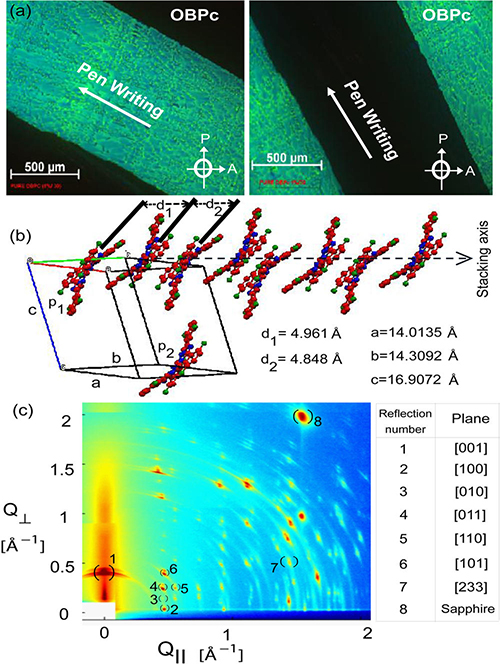X-RAY RUNS: Apply for Beamtime
2017 Nov 1 - Dec 21
2018 Feb 7 - Apr 3
2018 Proposal/BTR deadline: 12/1/17
2018 Apr 11 - Jun 4
2018 Proposal/BTR deadline: 2/1/18
Organic electronics are a commercially well-established technology in the markets of lighting and displays. But harvesting the benefits of organics for many other electronic applications — especially the reverse process of converting light to electricity, often involves new challenges on materials properties, quality, and our fundamental understanding of how organic electronic thin films work. For example, even when the chemical and/or optical properties of an individual molecule are known, it is often unclear precisely how these properties change the molecule is coerced into a thin, crystalline to fabricate a device. A recent Letter by graduate student Naveen Rawat of the University of Vermont, appearing in The Journal of Physical Chemistry (http://pubs.acs.org/doi/abs/10.1021/acs.jpclett.5b00714) contributes significantly to this challenge. Using advanced spectromicroscopy techniques and aided by grazing incidence diffraction at the G2 station at CHESS, Rawat and co-authors, additional members of the group of Prof. Madalina Furis along with other colleagues at UV and CHESS, describe and demonstrate methods for correlating electronic properties and thin film structure in two organic electronic thin film systems, each based on the well-known and technologically important Phthaolocyanine system. More specifically, the group uses several optical measurements — especially photoluminescence but also absorption and linear dichroism — as a function of temperature between 5 and 300 K to show evidence of a delocalized electronic state arising from quasi-1D stacking of molecules in the crystal. Delocalized states are the critical feature of traditional, inorganic crystals, like metals and semiconductors, that bestows their high electronic conductivity. The methods described provide both new insight into an existing system as well as a general, lab-based tools for investigating other systems.

Figure 1: (from Rawat et al (link)): (a) Polarized light microscopy images, (b) crystal structure, and (c) GIXRD data on a large-grain-size H_2-OBPc organic thin film. Scale bar 100 um.
Submitted by:
Arthur Woll, CHESS, Cornell University
12/11/2015
